Puh-puh-puh!!!
What is one to do, especially two hungry women, when after 5 hours on a coach they arrive in a completely unknown place, in a section of that place that is by the beach in theory, but the beach and the allegedly numerous restaurants are unpleasantly far away, while the hotel is completely dull in terms of the food? Well, they start to walk in the direction of that unpleasantly far-away beach. Sneža even did her best to locate a nice and the closest restaurant on a Google map, so we headed that way. However, soon we passed by a restaurant in which we saw only some local people and that is always promising.
So, the two of us sat there nicely, by now rather unpleasantly hungry, they brought us the menu and everything stopped right there. What to do now? We had absolutely no clue about what was on the menu. Of course, no way did they have a copy in any other language and there were no photos either, since why would they put photos when the Brazilians understand what is written?
As an experienced restaurateur, Sneža started to look at the surrounding tables and then we realised we were at the right place since the specialty of the house was the crab and everybody around us was getting crabs on large platters, as well as stone slabs and wooden mallets to hit the already cooked crabs. But, we also concluded that we would probably not be full after that, so we realised we needed some more food. Sneža kept looking at other people’s plates and I told her if she saw something she liked she should tell me, I would go to their table, apologise and ask what it was that they were eating or better still I would take the waiter by his hand, take him there and point with my finger.
To start with, we decided to begin with the things we knew. Just to get the things moving. So, I ordered beer and the fantastically kind waiter who spoke only Portuguese copied our thing and pointed with his finger towards the neighbouring table asking me if I wanted that kind of beer. In the absence of words, I just nodded. Soon I was to get a 600 ml bottle of grain and hop liquid served in a plastic cooling container. With Sneža it was much easier – we had already learned that she took cafezinho, i.e., small coffee, and we also knew how to say “with milk” – com leite. The only problem was that the waiter was completely shocked that anybody was taking coffee at this time of night, but then again he did not know Sneža – she can easily sleep through litres of coffee inside of her. So, the coffee was also served, but the extent of the waiter’s shock was so great that he did not even charge us for it later. Their register is simply not programmed for coffee after 5 pm.
Sneža’s staring at other people’s tables paid off in the meantime since she noticed some fried pastry with cheese that we really love, so I told her the word for cheese in Portuguese and then we found one single item in the menu that had cheese in its name. Then I realised this must be what we wanted, since there was also a word “pastel” which must have the same root as “pasta” (as in Italian pasta). And thus we got to the starter. It was great and we devoured it quickly, just like one does when hungry.
But, what about the crabs? Well, to start with, being in charge of ordering and communication I have to say that I had no idea how to say this in Portuguese. Still, our first neighbours had just been served that, so I pointed to the waiter again towards their table counting on his understanding as I wanted him to and that was – We want that, although my hand actually pointed at the back of a woman in red and we were definitely not interested in her. In order for me to be sure there was no confusion, I additionally started to do the pantomime of hitting with a mallet on the flat table, along with sound effects: “Puh-puh-puh!” Well, he got that all right and the crabs also found themselves on the list of the food we were to eat this night. But, that was not all. When the starter was already eaten, the waiter came and asked us something. What now? In the meantime, we started using the word for crab, which I have forgotten it by now (I speak Portuguese only when there is a waiter nearby), but there were also other words, too. So I said, and I said it several times, “crab, crab...,” and I was just about to throw in a “puh-puh-puh” and the hitting with the mallet pantomime, but then I realised he asked us how many. ??? How would I know? Sneža and I agreed quickly that four seemed like a good number and the waiter looked at us approvingly. After all, we agreed, if necessary we can always order more.
There was no need for that. The crabs were tasty, if you ever reach the hint of the meat. The main point lies precisely in that “puh-puh-puh,” i.e., in the hitting with the mallet, as a ritual, as well as a serious practice of patience. And that’s why crabs are a part of a starter and not the main course. In the end, we decided to fill up the remaining empty parts of our stomachs with another round of fried pastry that was supposed to be filled with shrimps. There was mostly potato, but it was tasty nonetheless and this definitely stopped our hunger. We could go back to the hotel for the night.
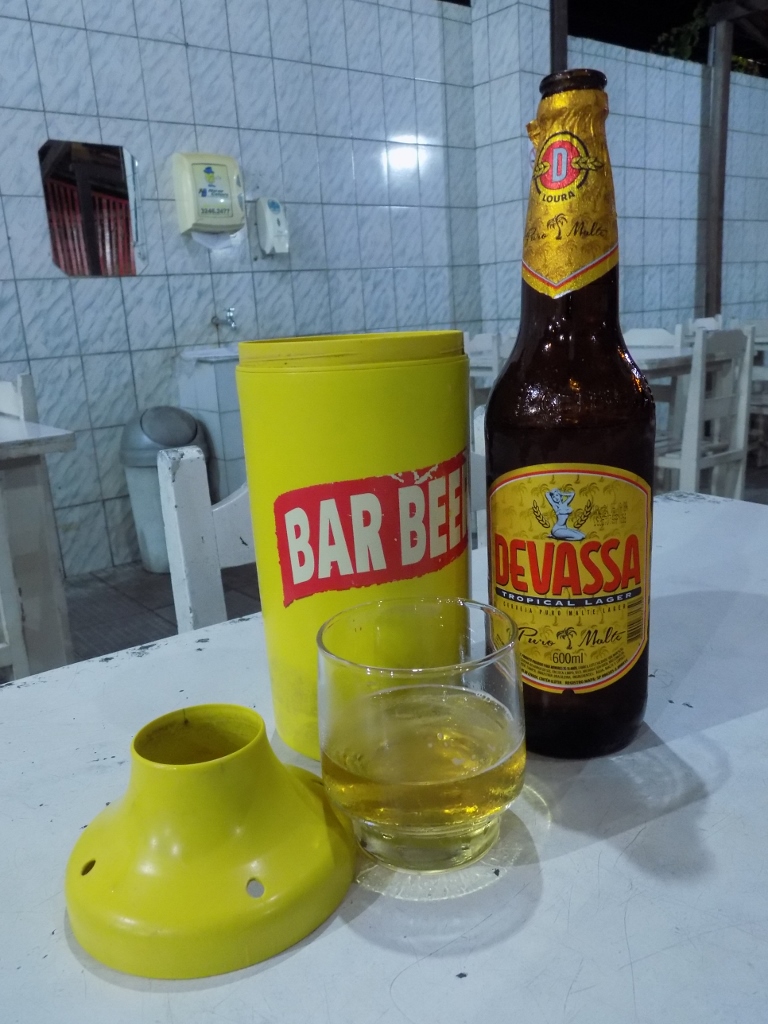 Local beer (the sink for washing hands after cleaning crabs is in the background)
Local beer (the sink for washing hands after cleaning crabs is in the background)
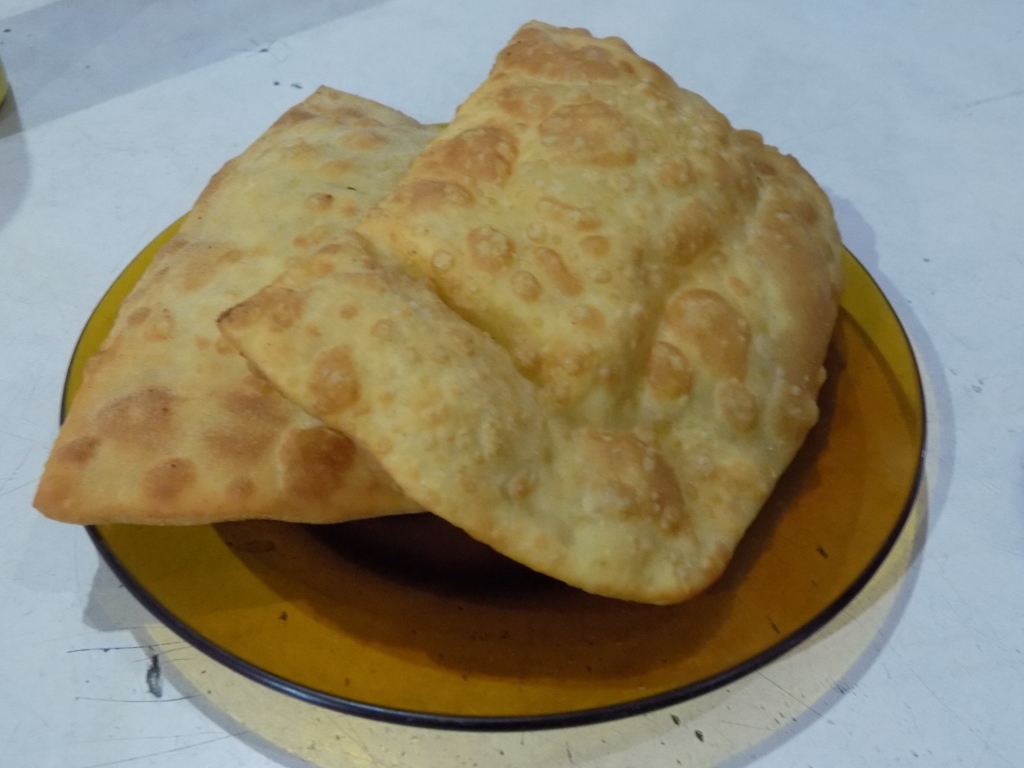 Fried pastry with cheese (Pastel de queijo)
Fried pastry with cheese (Pastel de queijo)
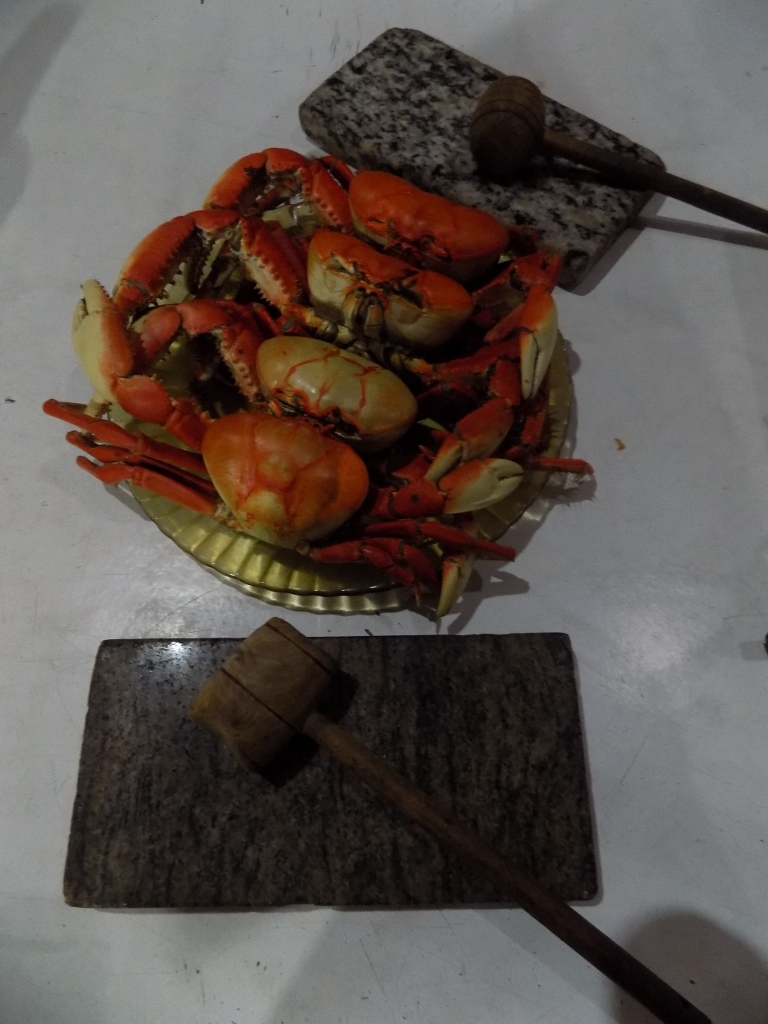 Local specialty – the crabs
Local specialty – the crabs
Instead of trying to locate the beach the following morning, Sneža and I briefly sunbathed by the hotel’s pool and we also dipped ourselves in its fresh water. That was a good introduction for my washing of hair later and after that we finally moved and went to the centre of Aracaju and the Old Bus Terminal used for local coaches or rather minibuses. Thus we transferred to the small town of São Cristóvão. The bus stops there at several points, but this was our first time in the place and we used our instinct for deciding where actually to get off and it went well. Not far from the bus stop on a hill where we got off, there is São Francisco Square (Praça São Francisco) and this is the main thing that needs to be seen in this place.
Around the quadrilateral square, there are buildings constructed in the 18th and the 19th centuries and although the two of us had already visited old towns in the previous few days, this place is significant since it is located in the north-east of Brazil and the federal state of Sergipe, thus being considered different from all others. By the way, Sergipe is the smallest federal state in Brazil. In addition, São Francisco Square (Praça São Francisco) is considered an exceptional monumental ensemble that includes public and private houses and that reflects the period in which the Portuguese and the Spanish crowns were united (the Iberian Union existed in the period between 1580 and 1640). Good connoisseurs of the history of urban planning may clearly see here the influences of the Portuguese and the Spanish approaches to this subject. Namely, the Spaniards built their towns in Hispanic America by spreading them away from the Main Square (Plaza Mayor), which may be seen here as well, while the Portuguese had a completely different pattern for building their colonial towns in the tropical regions. In other words, here it is possible to see a rare and curious historical symbiosis.
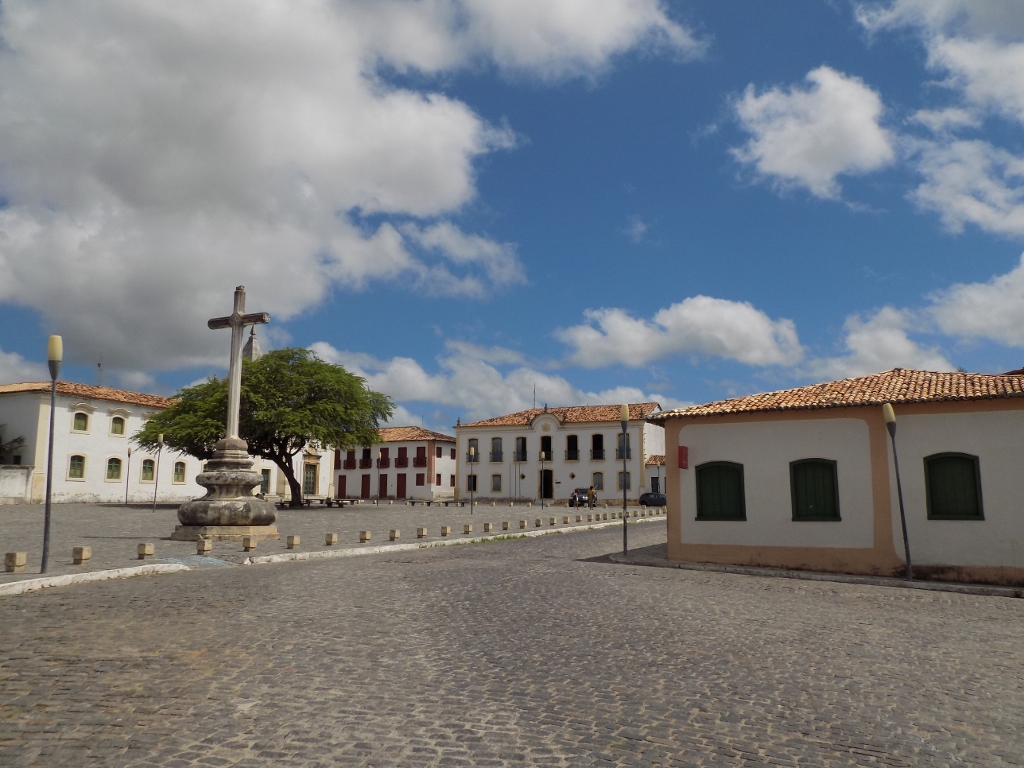 São Francisco Square
São Francisco Square
One of the most important edifices in the square is the Church and Monastery of St. Francis (Igreja e Convento de São Francisco). Unfortunately, the church was closed, but we could enter the Museum of Sacral Art that is located adjacent to the church, so we visited it thoroughly and it was all very interesting.
Then we crossed the square and went to visit a smallish Historic Museum of the State of Sergipe. It was interesting that we had to take off our shoes while in the museum, not only us but all the visitors to the museum have to do it, in order not to damage the parquet.
After this, we returned to the centre of the square and sat for a while under a tree that rendered shade there and then we also took a photo of the two of us. We do not have a lot of photos together, so it was nice to do it here since there was a bench under the tree on which I could put my camera and set it to make the photo on its own.
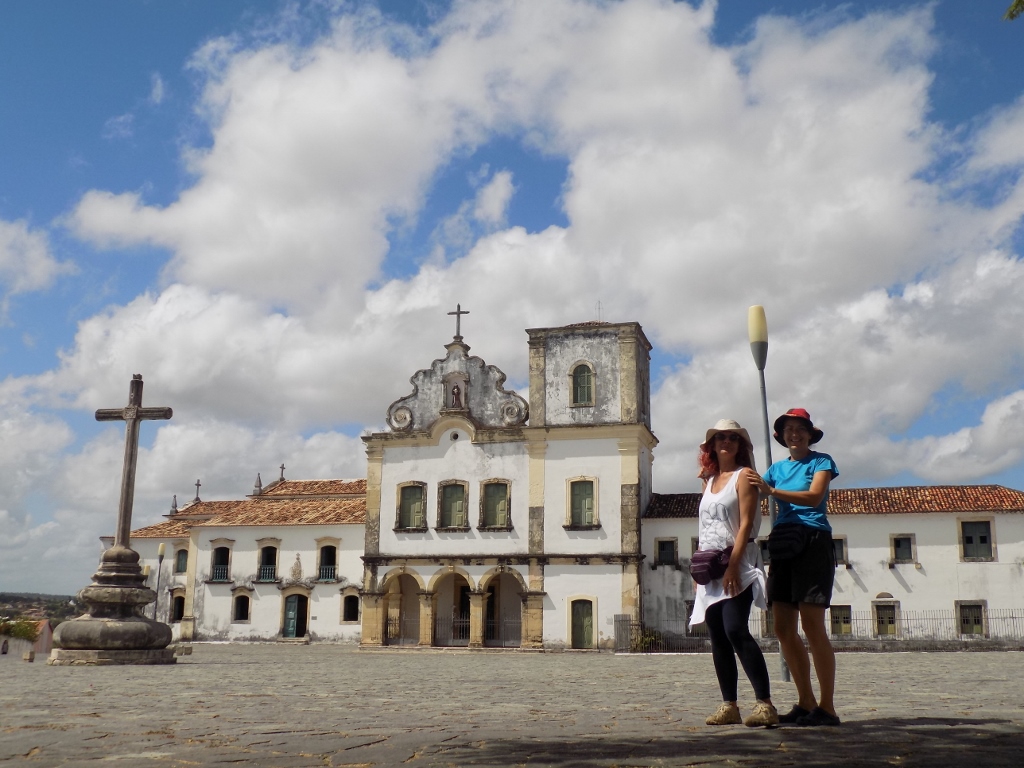 São Francisco Square, Museum of Sacral Art is to the left, while the Church and Monastery of St. Francis is in the centre and right
São Francisco Square, Museum of Sacral Art is to the left, while the Church and Monastery of St. Francis is in the centre and right
Of course, by this time we felt it was the time for a break on account of the incessant heat that permeated the middle of the day. Thus we found a café that operated within a private house and its tables were arranged in a corner room with the windows on two sides opened, so we had a nice draft. We took some coffee, as well as a local cake called queijada and it was excellent. Sneža was the first one to go to the toilet (the owner took her there to show her the way) and when I asked her later where the toilet was, she said that the owner had to take me there. I was a little confused, but it was all clear to me later. In order to get to the toilet, one has to zigzag through the house, there was an elderly woman sitting in the semi-dark there (I hope I bid her good afternoon or I may have been too confused) and then one gets to an inner courtyard where the toilet was. I returned on my own.
The walk around São Cristóvão took us then to the Church of Mount Carmel (Igreja do Carmo). This church was closed, too. This is all probably because São Cristóvão is a small town, it was early in the afternoon, the time for lunch, and it was very hot, there was almost nobody else in the streets, while the two of us were the only tourists around, so it was not worth the trouble of keeping the churches opened. This one was particularly cute from the outside though, with its soft and pastel colours.
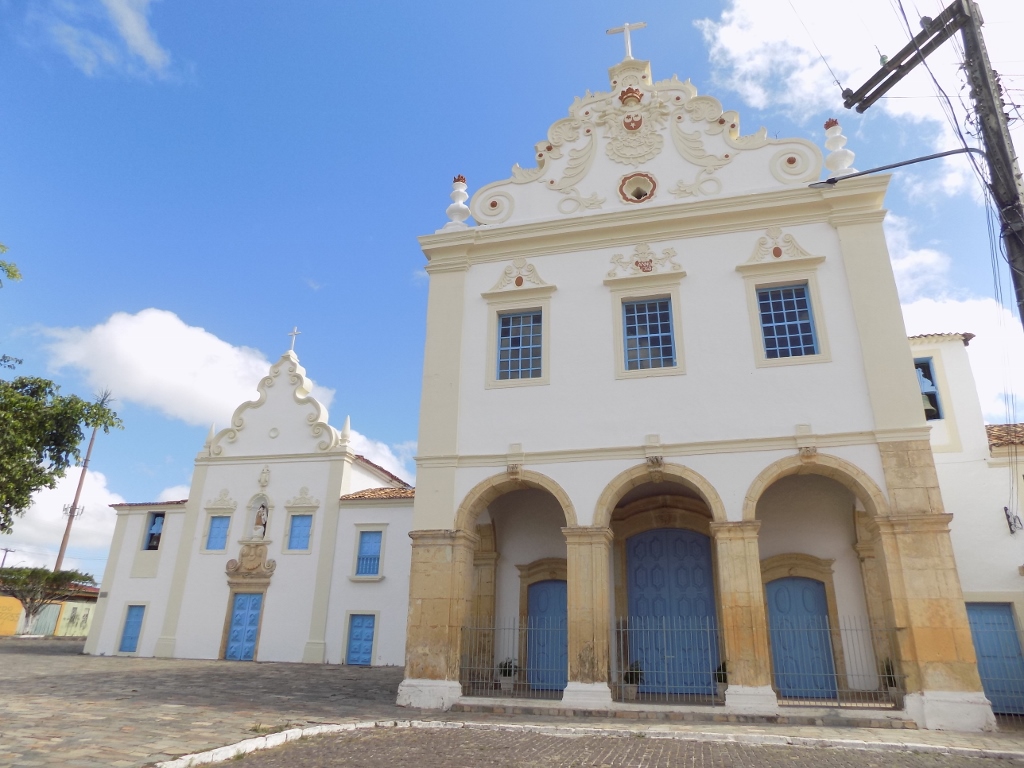 Church of Mount Carmel
Church of Mount Carmel
Farther down the street we reached a square at the corner of which there is the Parish Church of Our Lady of Victory (Igreja Matriz de Nossa Senhora da Vitória) from the 17th century, but needless to say it was also closed, so we just looked at it from the outside. This whole historic centre of São Cristóvão is situated on a hill and after this brief stay near the Parish Church we followed the streets down the hill in order to catch a minibus to Aracaju at the foot of the hill where there were more people and more activities.
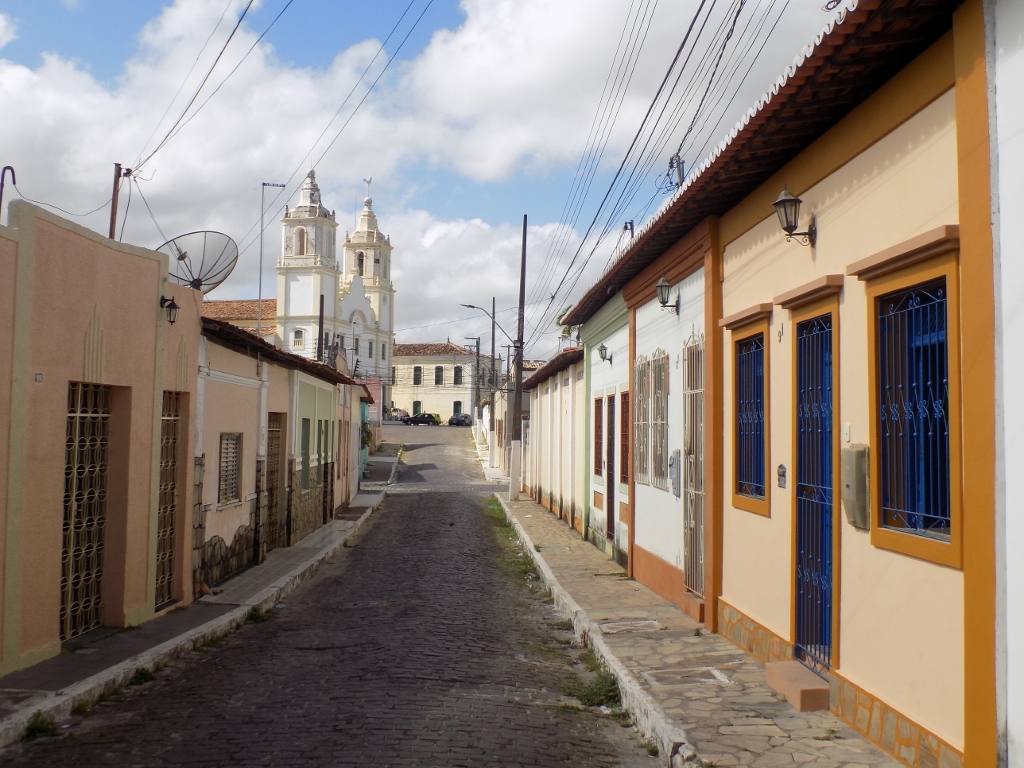 Parish Church of Our Lady of Victory
Parish Church of Our Lady of Victory
Having returned to Aracaju we first made a stop in order to eat something and we did this in one section near the Old Bus Station similar to a square. There were carts with fruits and vegetables around, as well as mobile kitchens along with their pertaining plastic tables and chairs arranged on the pavement. I found it fascinating how loud the music was. Our conclusion was that the Brazilians like music, especially when it is very noisy. The video clip does not convey faithfully the level of noise, but it can give you an idea about what it all looked like.
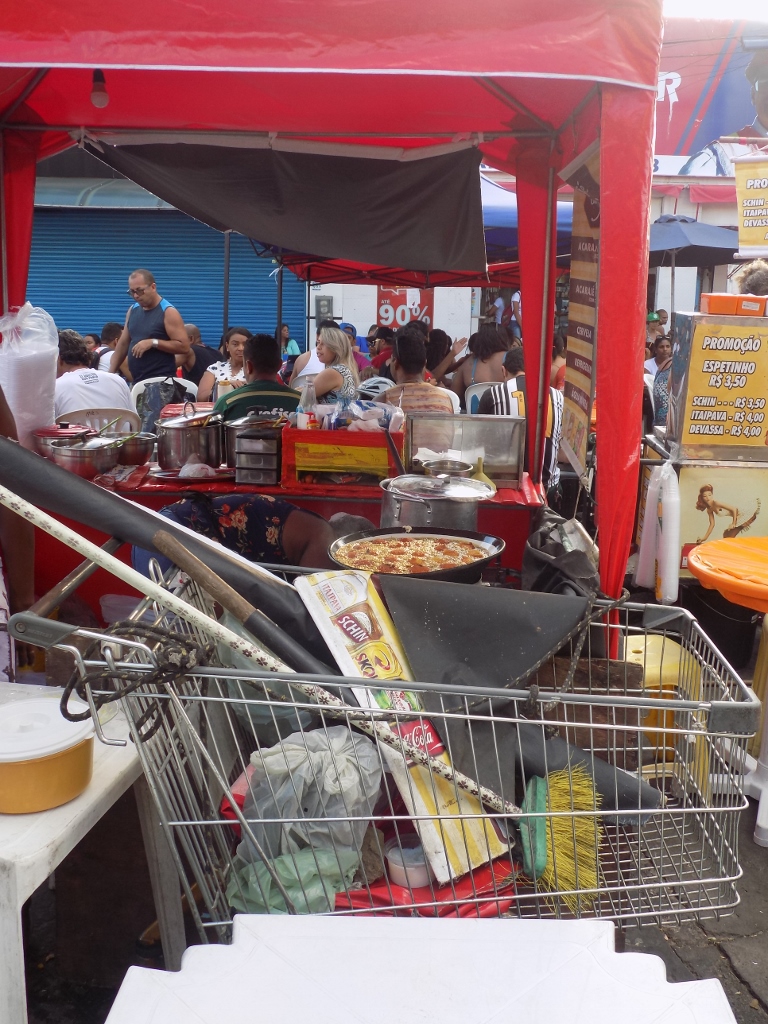 Supermarket cart between our table and the kitchen
Supermarket cart between our table and the kitchen
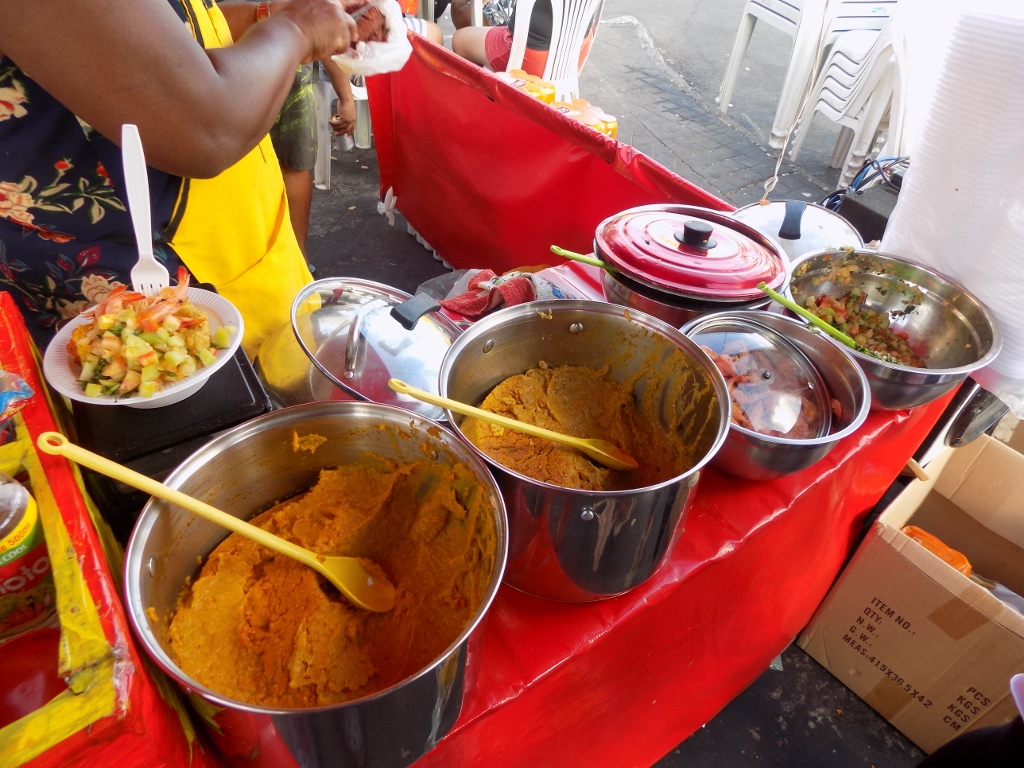 A part of the offer
A part of the offer
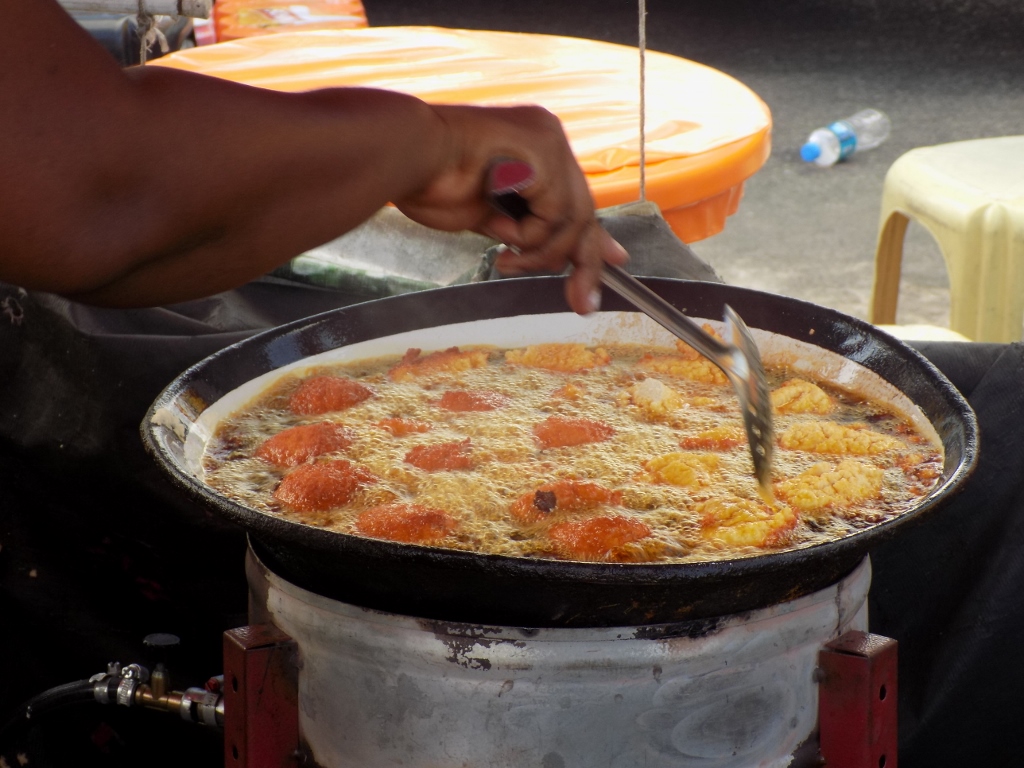 Some food is freshly prepared on the spot
Some food is freshly prepared on the spot
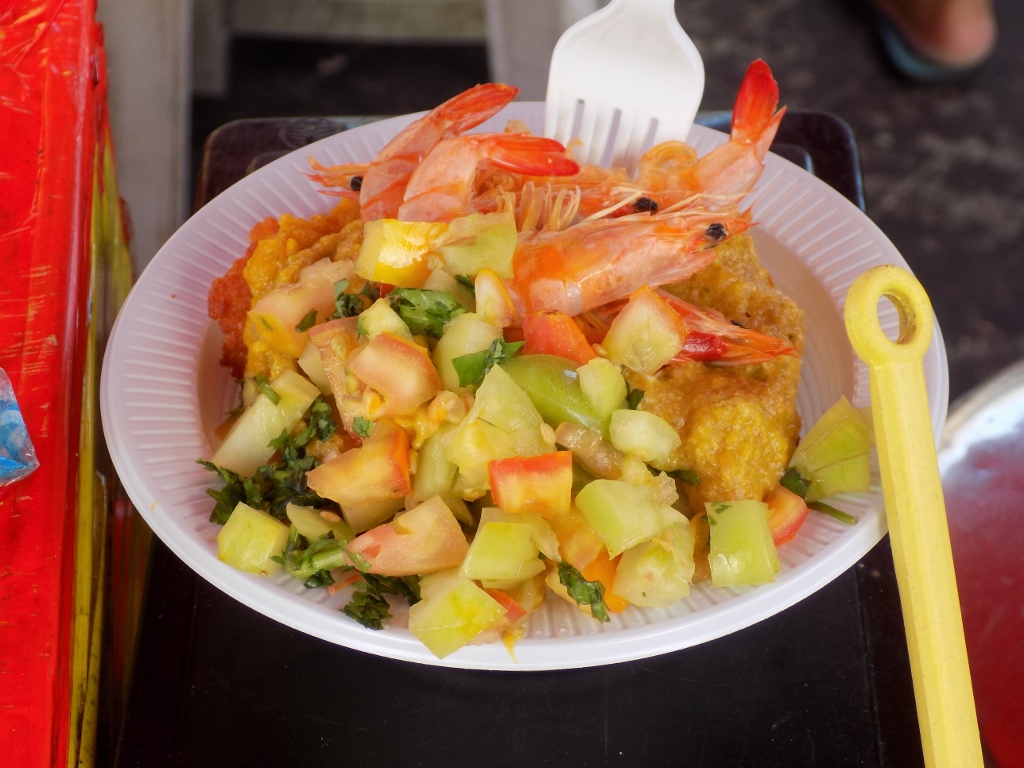 Our dish is ready
Our dish is ready
The food was good and filling, and after our meal we took a bus to get to the part of the city with a beach named after that part of the city which was Atalaia.
I must admit that I expected more from the beaches in Brazil. This one was impressive with its size, wonderful sights and the sky that reflected in the large surfaces covered with thin layer of water left by the waves in their wake.

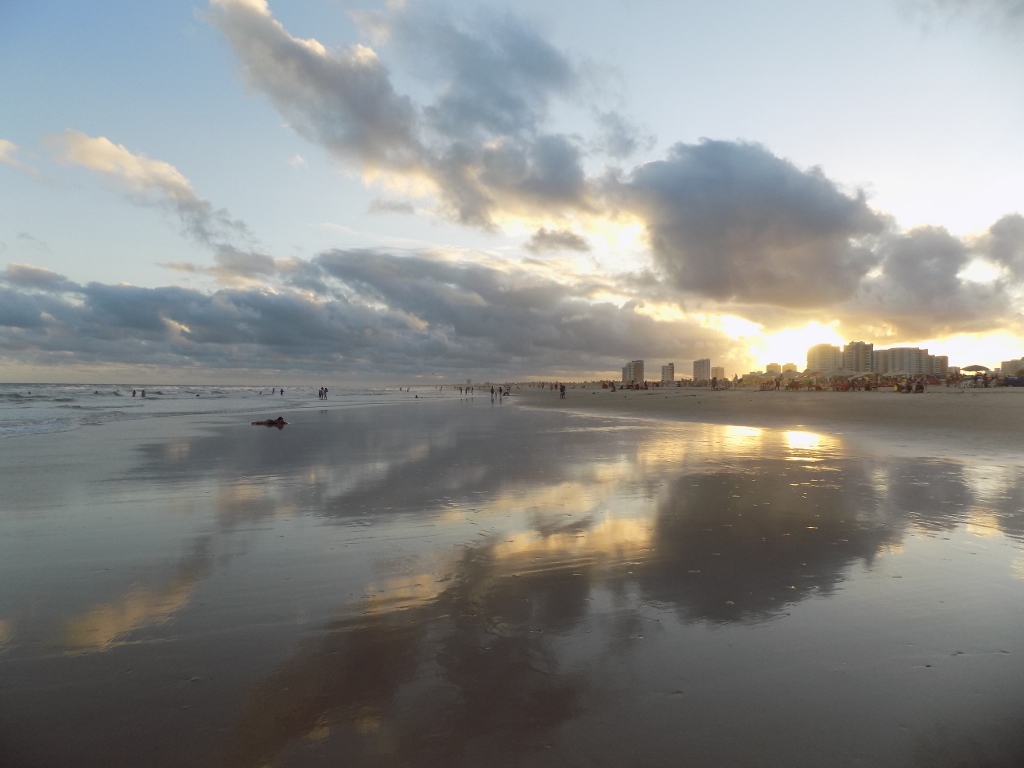 Atalaia beach
Atalaia beach
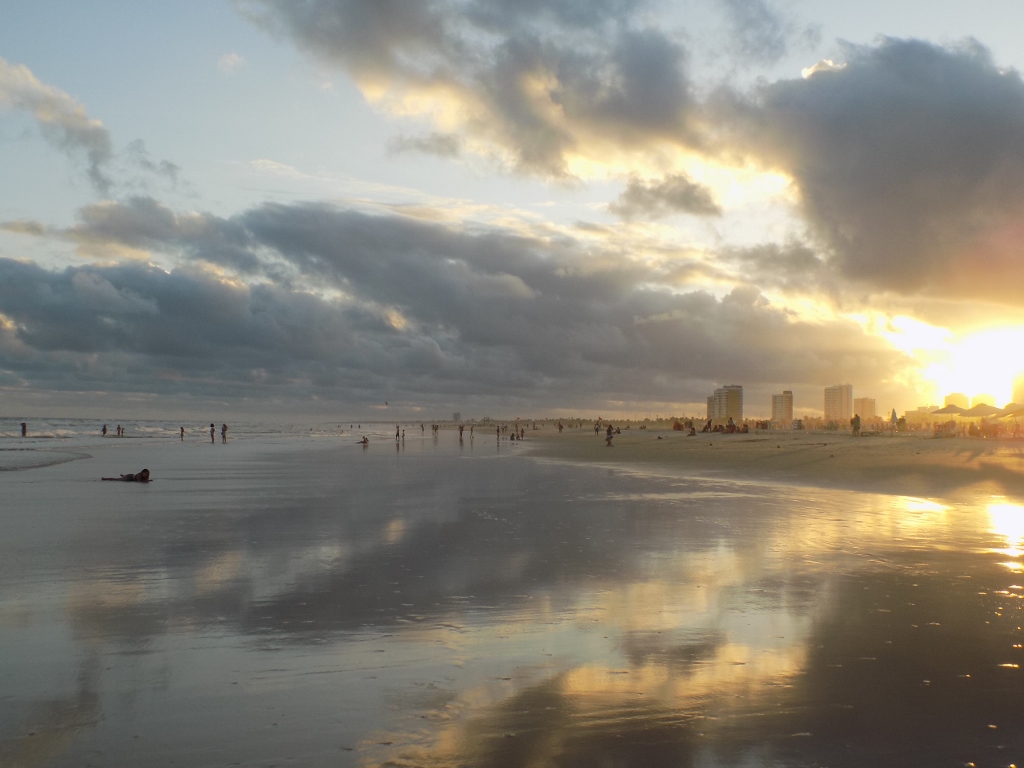 Atalaia beach
Atalaia beach
But, this was certainly not a beach in the waters of which I would gladly bathe and swim. Still, it felt good to walk barefoot along the solid sand base where among other things we saw some unusual creatures. I immediately thought, and later confirmed it on the internet, that this was the Portuguese man o’ war, a medusa-like creature. Although not a proper medusa, this animal may potentially be a rather unpleasant, even dangerous species. Adult specimens can have tentacles as long as 18 metres. These samples that we saw on the beach were significantly smaller, their length was between 10 and 15 cm, and I presumed they were young animals and thus not too dangerous. Still, just in case, we did not touch them and only took photos of them.
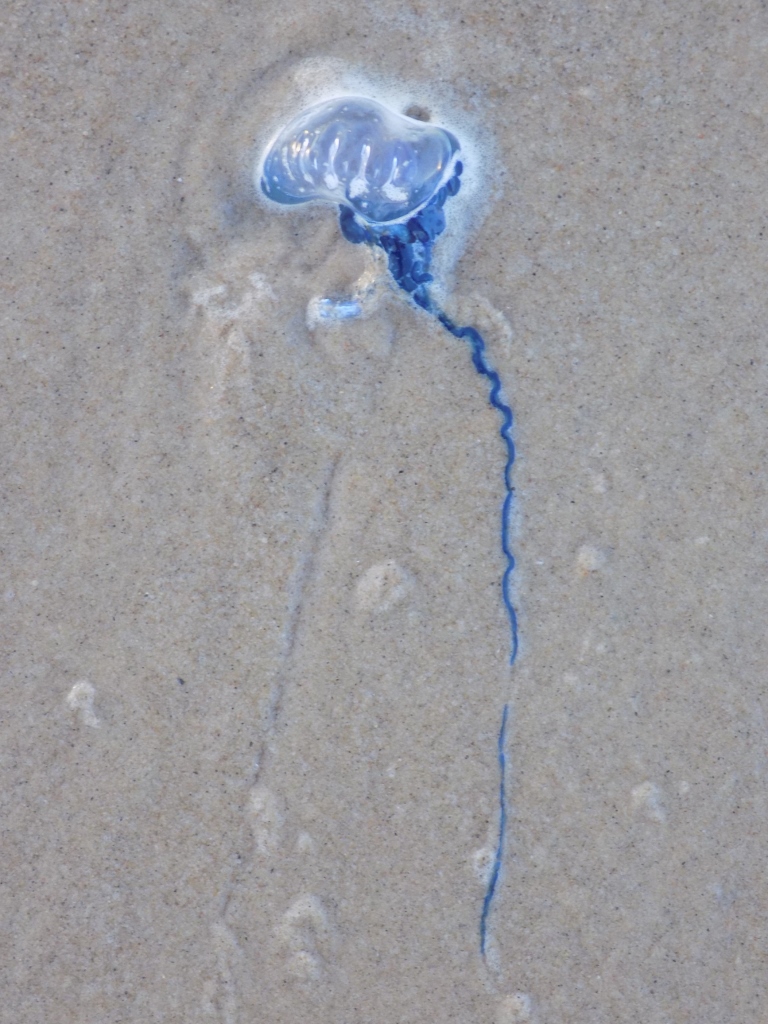 Portuguese man o’ war baby
Portuguese man o’ war baby
By the end of our walk along the beach almost the entire sky was covered in clouds, but the temperature was pleasant and therefore there were still a lot of people on the beach or beside it.
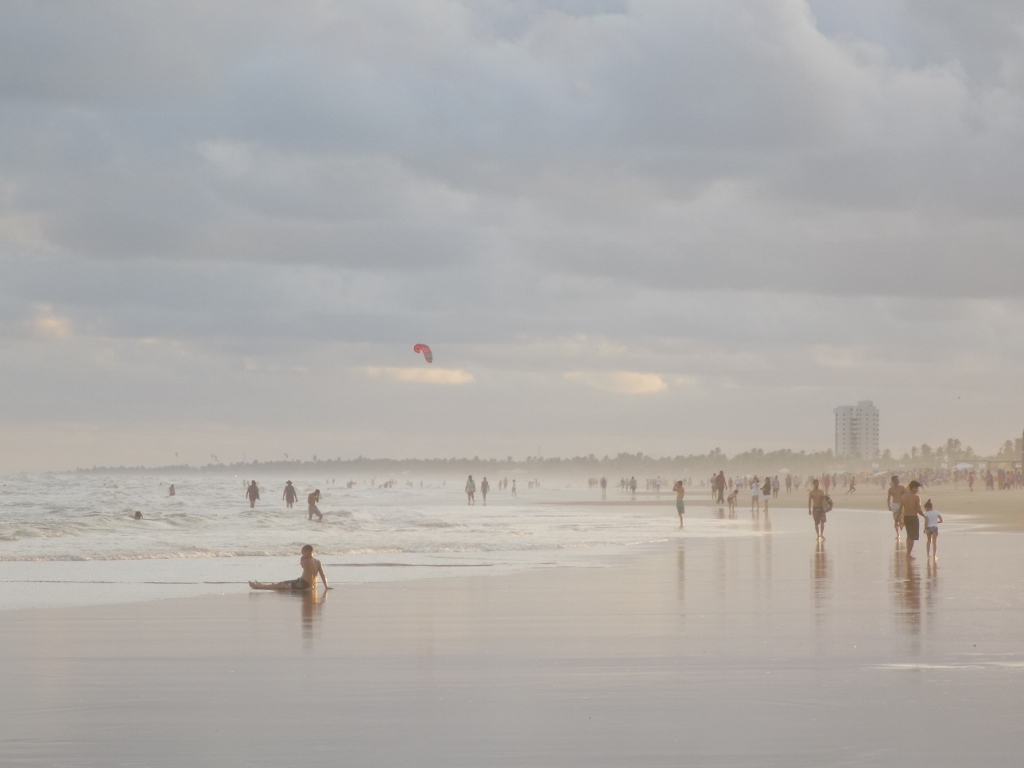 Atalaia beach at the time when the sun is setting
Atalaia beach at the time when the sun is setting
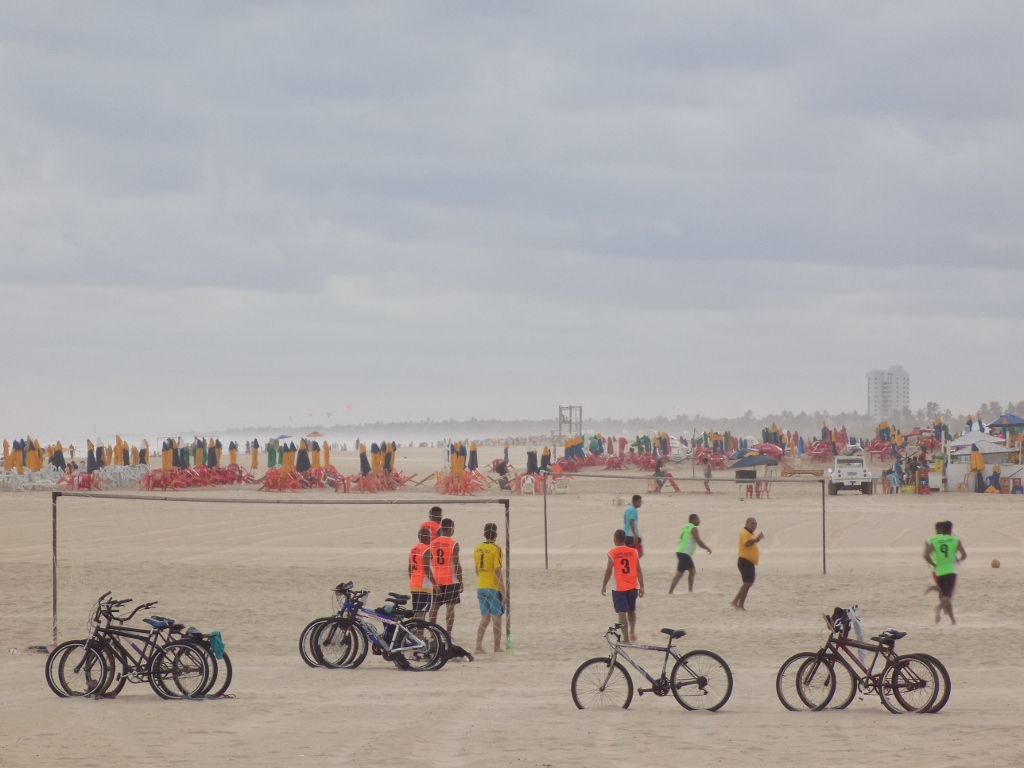 Atalaia beach
Atalaia beach
The following morning again we had some time after breakfast to spend it beside the pool, but not too much, since we had a long journey ahead of us on this day – 9 hours by coach to the city of Recife.